How to Update a Kitchen Without a Total Gut Rehab
September 11, 2020
A major kitchen renovation usually means a major investment. While a brand-new kitchen designed to fit your family’s lifestyle is a wonderful addition to your home (and a good return on investment should you decide to sell), you can also update a kitchen to improve the look, feel and functionality of your existing one.
Especially while homeowners might be feeling a little more budget-conscious right now, in the year of the COVID-19 pandemic, updating your kitchen without a total gut rehab is a smart thing to do. It might cost half (or less!) of what an entirely new kitchen would be, and the results can be seriously impressive.
How do you know if a kitchen update, versus a renovation, is right for you? The key is in the layout. If you feel like your kitchen floor plan is already good and functions well for you—and if you have good quality cabinets, as well—then there are many updates you can do to create a fresh new kitchen.
Here, I’ll walk you through nine ways to update your kitchen working with a smaller budget and an interior design mindset to help you get your dream space.
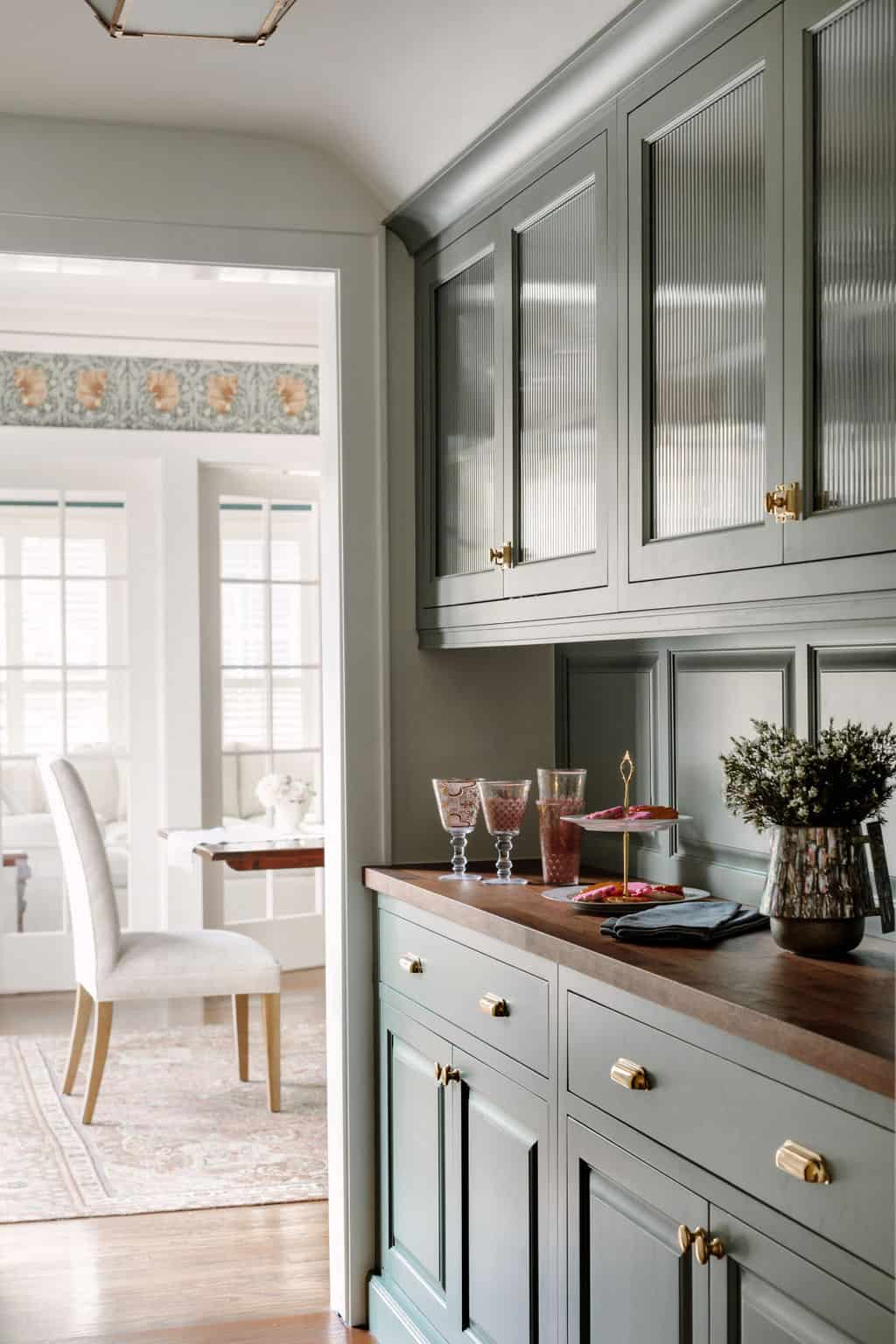
Vintage Cutch Colonial, Centered by Design
Paint your cabinets.
This is the No. 1 high-impact update. I recommend you hire a professional to do this, and get referrals, as cabinet painting is different than regular painting (and not every painter offers this service). You want to look for someone who specializes in cabinetry and millwork—ask friends and family for referrals. Painting cabinets works best when you already have solid-wood, high-quality cabinets and you’re planning to keep them for another 5-10 years or so. (Note: Don’t try this if your cabinets are particle board or MDF.)
Do strategic cabinet surgery.
I’d strongly recommend working with an interior designer or a cabinet-specific showroom or builder on this update, as it’s usually not something a homeowner can do on their own (unless you’re a skilled carpenter!). Think of cabinet surgery as a way to go beyond painting to change the functionality of your kitchen by making tweaks to your existing cabinet footprint (i.e., hanging doors on open shelving, or vice versa) that will work better for your needs.
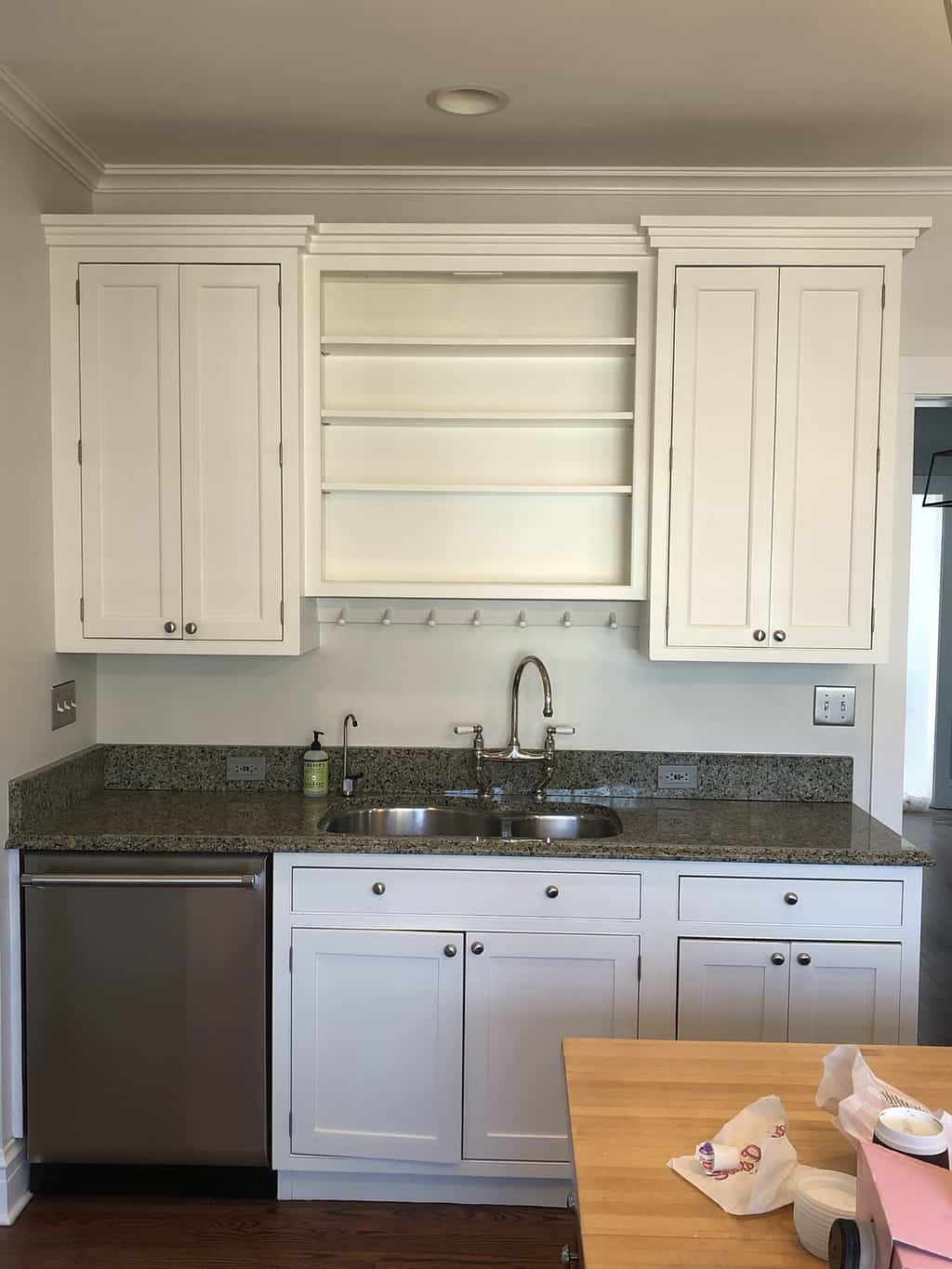
North Shore kitchen, before
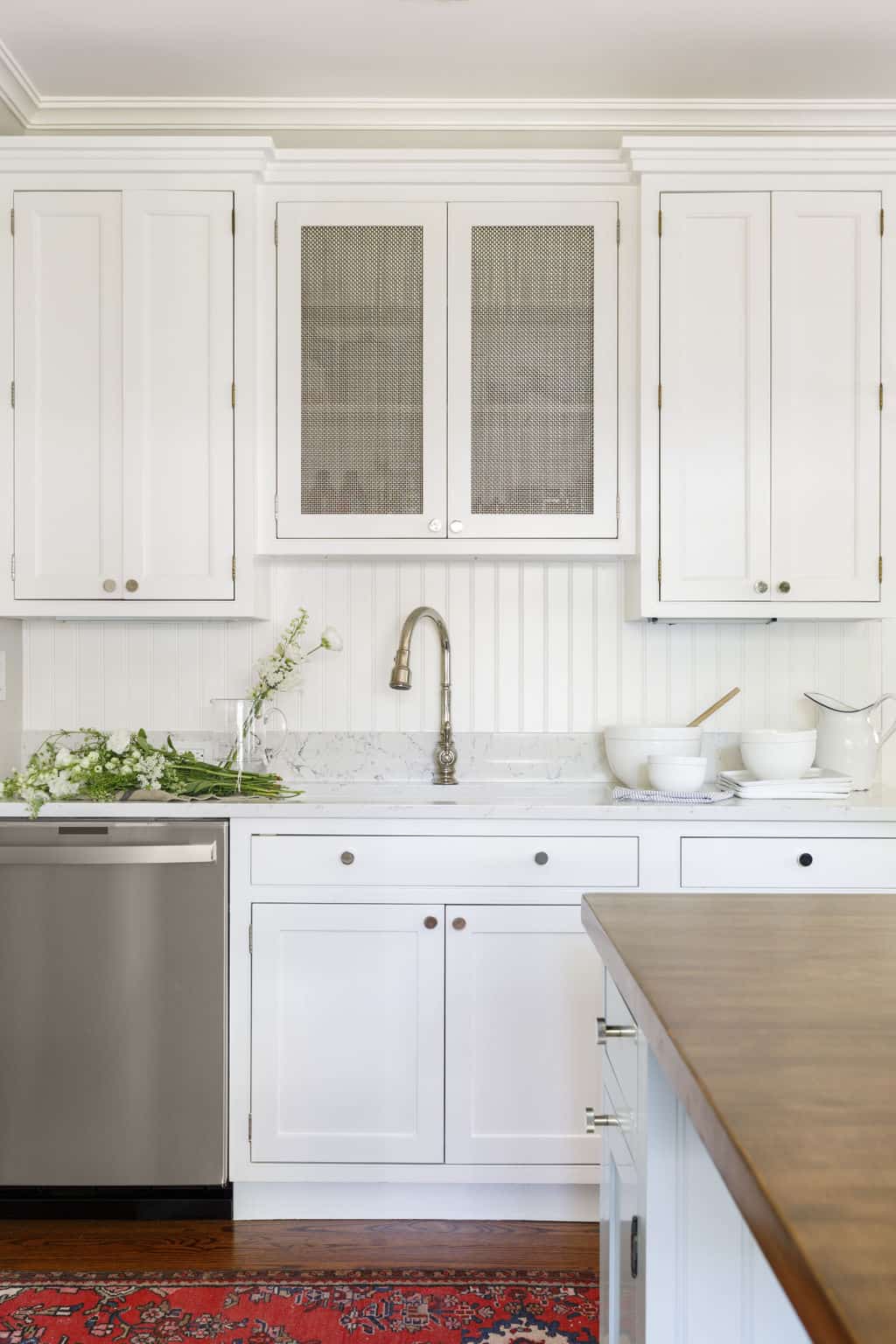
North Shore kitchen, after – Centered by Design
Remodel (or add) an island.
An island can really change the feel of your kitchen. If the perimeter of your kitchen is working well for you, then thinking about changing your island in some way—whether that’s painting, adding a different top or doing a form of cabinet surgery on any shelves or cabinets—can freshen up the space. It’s less costly than replacing your cabinets, too.
Below you can see two different applications for changing your kitchen island. In the North Shore kitchen (with the blue island) we painted, re-stained the butcher block and added new hardware. The all wood kitchen needed a new island and we choose to design something new and more modern, but that fit within the existing space and layout.

North Shore kitchen, Centered by Design
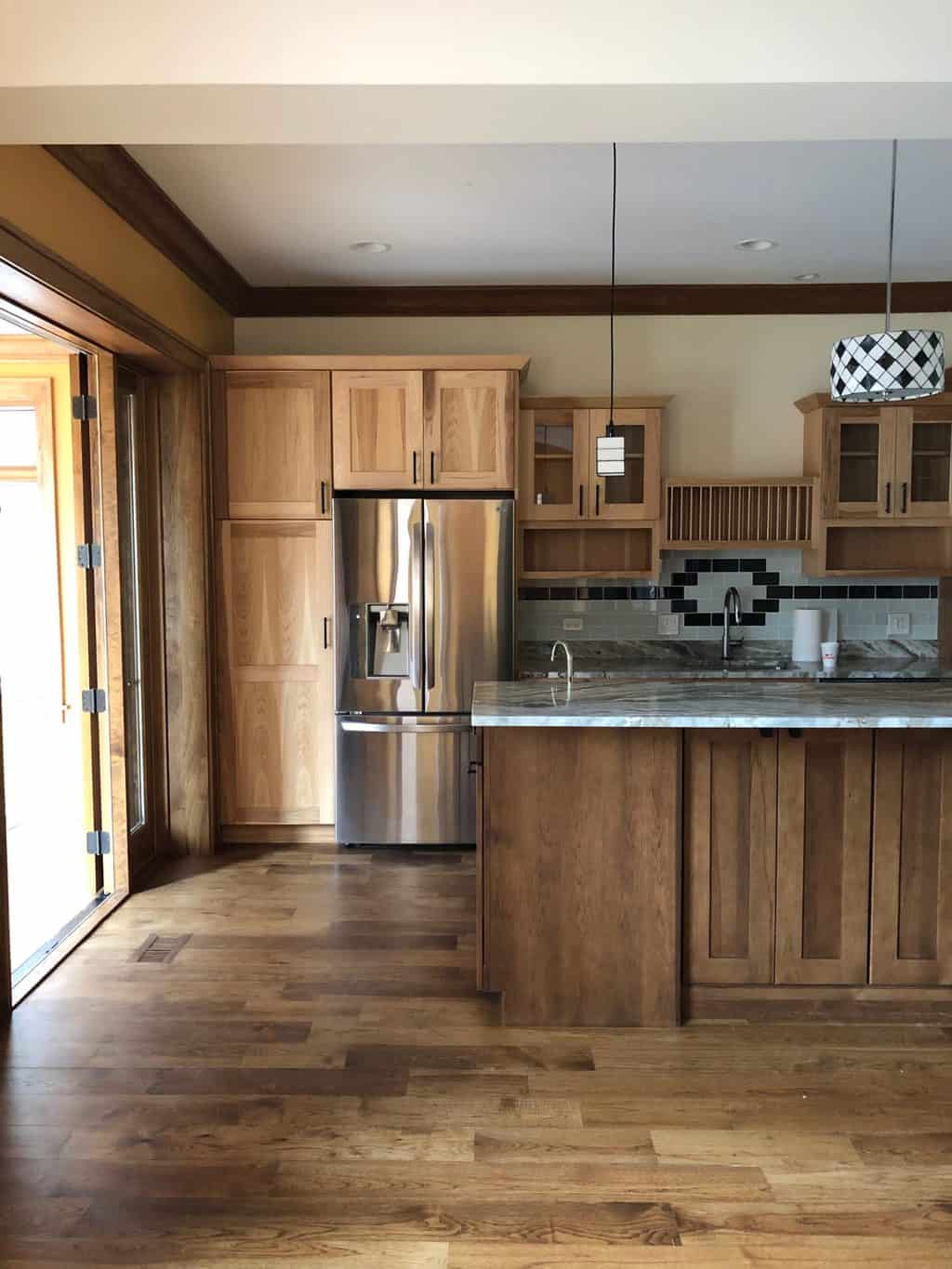
Lincoln Square Kitchen – before, Centered by Design
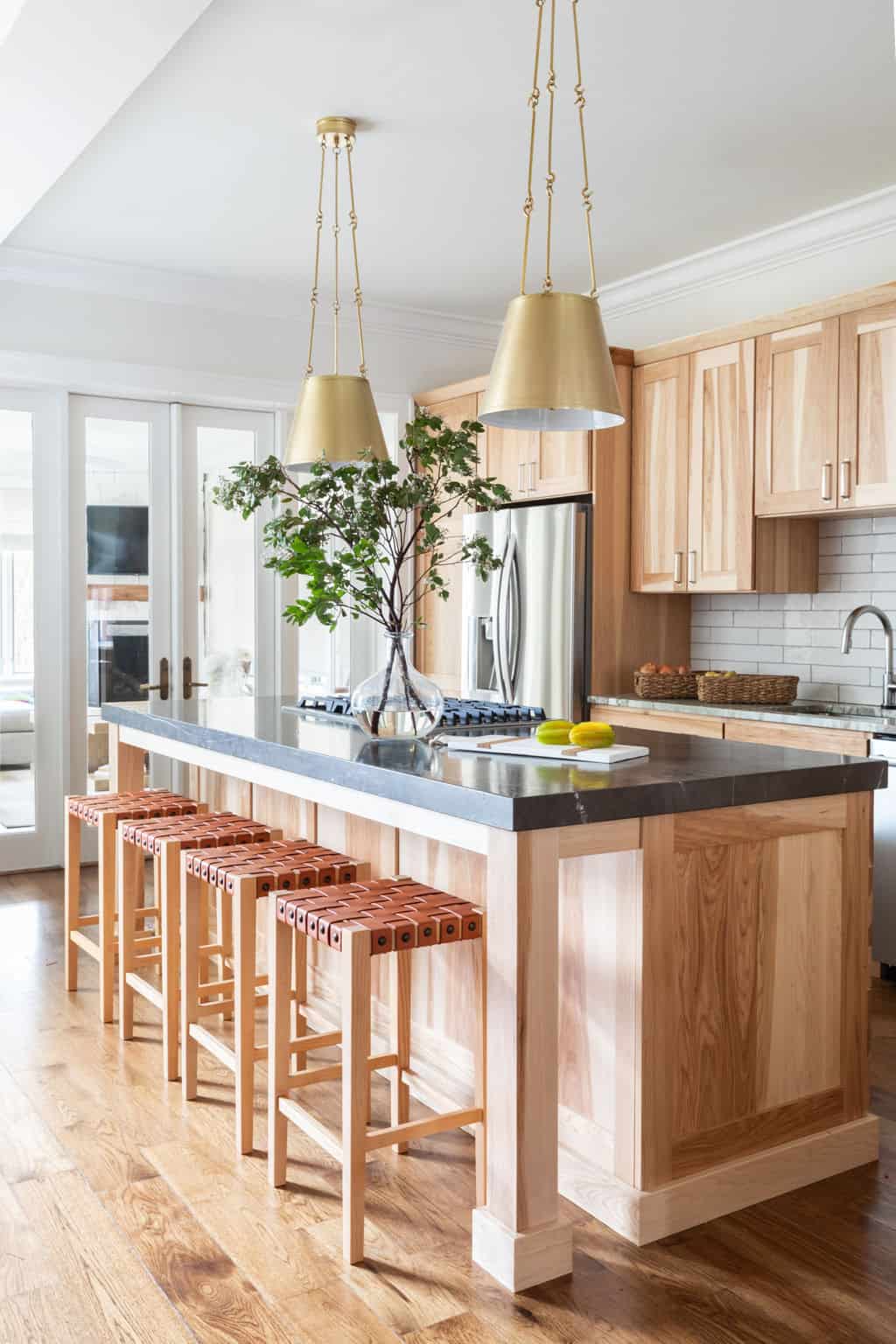
Lincoln Square Kitchen – after, Centered by Design
Get new appliances.
Appliances are very personal—what works best for you depends heavily on how (and how often) you like to use them. In many kitchen renovations, appliances are chosen first and the kitchen is designed around the appliance list. But if you’re thinking about replacing an appliance, whether due to age or functionality, it’s may also a good time to update your kitchen. This way, you can consider the appliances you really need or want and how to make that work in your space, versus trying to find a new appliance to fit in your existing space.
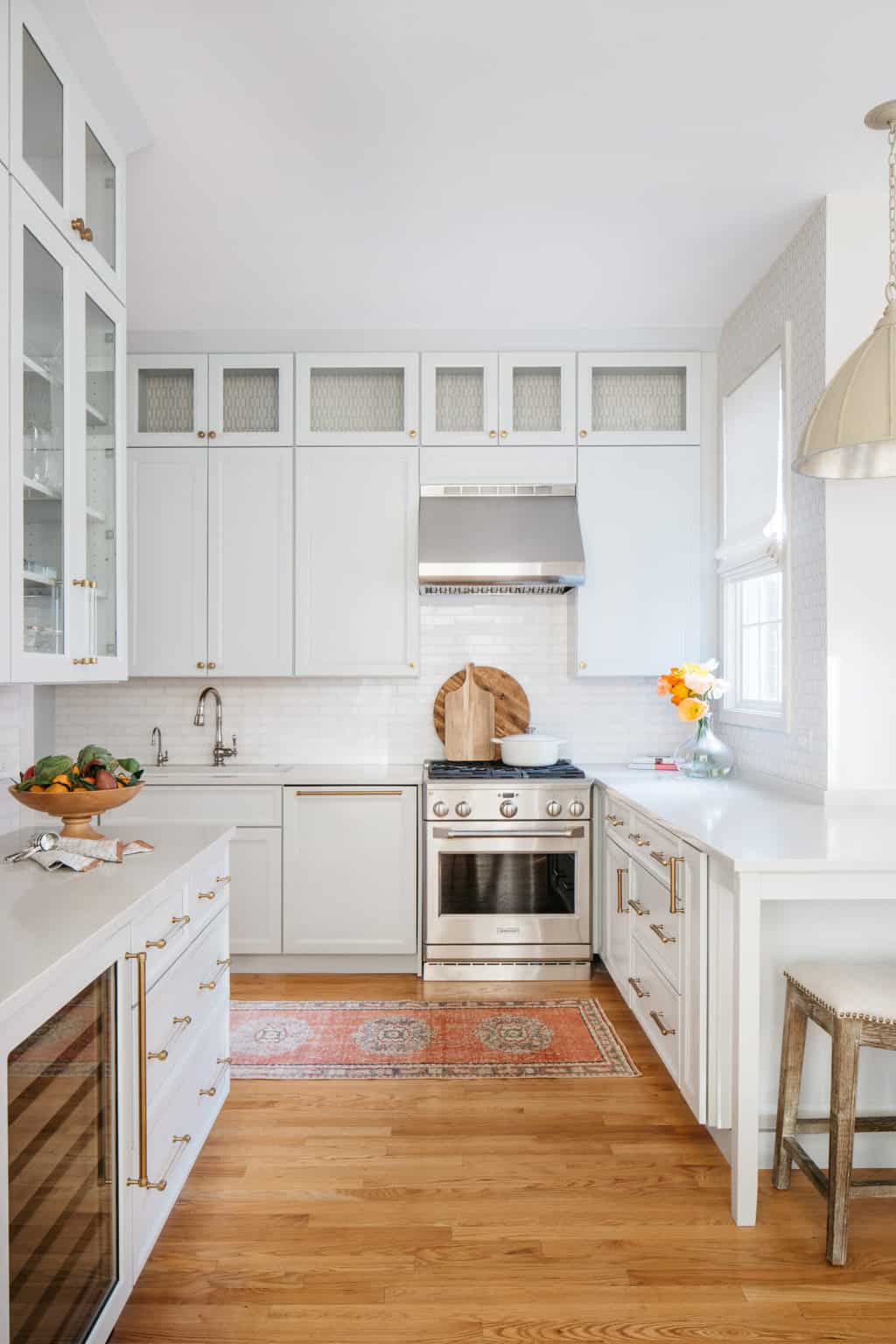
Lincoln Park Kitchen, Centered by Design
Install new countertops.
Another super high-impact, big change that will give you a good return on investment if you sell is installing new countertops. Almost everyone these days wants quartz countertops, which is a man-made material that’s very stain resistant. It may cost you anywhere from $5,000-$15,000, so you’ll need to have a larger budget to consider this update. But again, it’s going to make a huge difference in your kitchen.
Change the backsplash.
This is a project that could be done in a long weekend, and you might even be able to DIY it. The backsplash is a great spot to add pattern and color to an otherwise-neutral kitchen, too. If you don’t know what you’re doing or don’t feel confident you’ll be able to get professional results on your own, hire an installer.
Switch out your hardware.
The easiest kitchen update you can do, switching out your hardware can be done in a day if you plan ahead. You may not realize just how many knobs and pulls are in your kitchen until you look into making this update. I always say to count three times and make a drawing so you’ll be sure you buy the right amount for what goes where! (Find more detailed instructions on how to count your hardware in our Insider’s Guide to Kitchen Design.) Be sure to do your research on what you’re looking for and determine your price range. You can find great hardware at Home Depot, or you can spend tons of money on luxury hardware. It all comes down to the look you’re after, hardware can be a great place to save or to splurge!
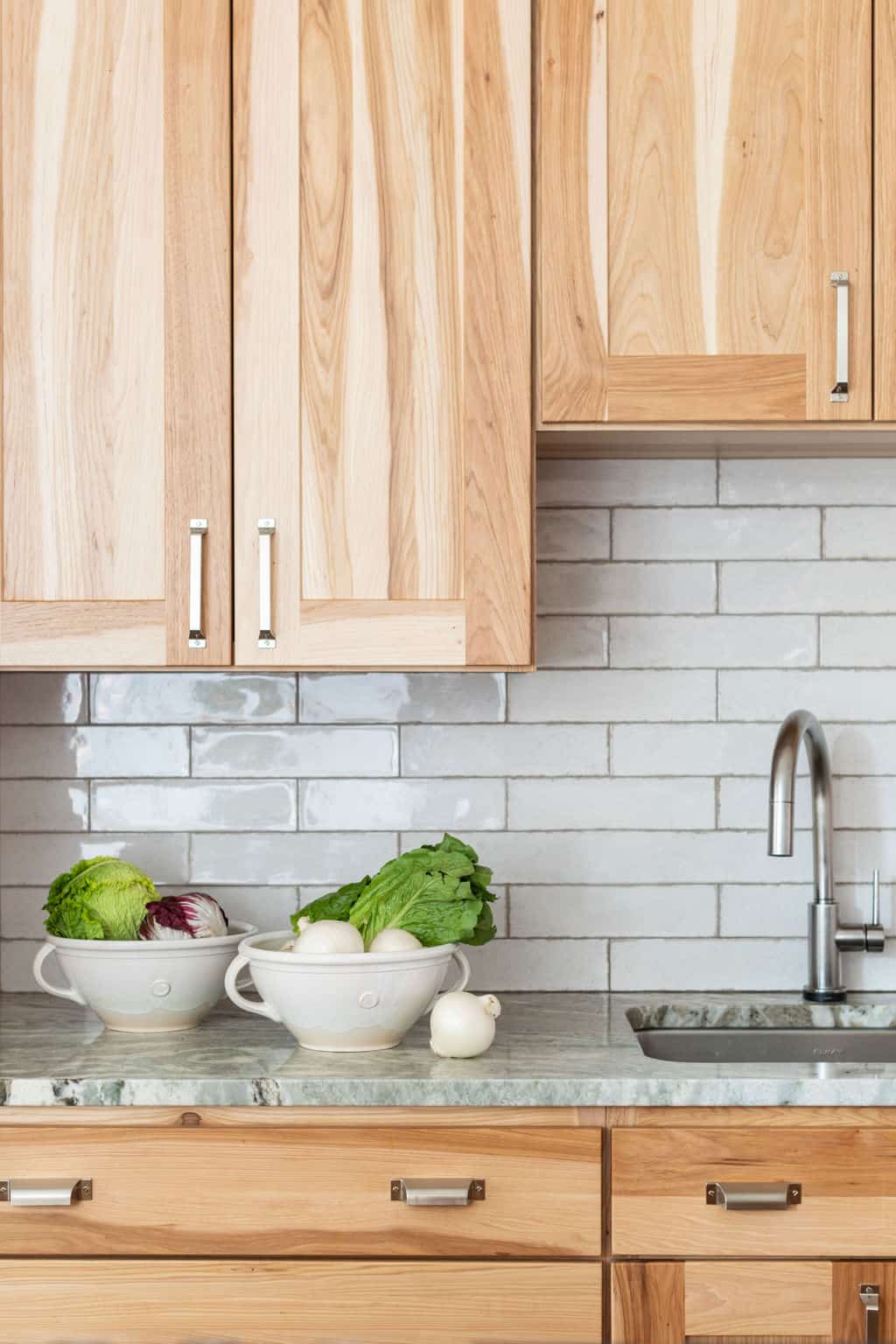
North Chicago kitchen, after
Replace your vent hood.
If you have a kitchen where the hood can be changed, that can be a great visual improvement, as a hood can act like a centerpiece of the space. This is something that will require the help of a contractor or a handyman, because it’s not as simple as just replacing the hood itself—you’ll need someone who understands all the pieces that make it work, including the blower and the liner, plus how it vents! You might want to work closely with your appliance vendor to understand what you need functionally in your kitchen while transforming the look of it. (Of note: If you have a microwave over your range, it’s often in a cabinet and it can be more complicated to “swap” to a hood design). It really depends on the upper cabinet layout. Consult a professional on this one!

North Shore kitchen, before

North Shore kitchen, after – Centered by Design
Swap out lighting.
Lighting can really make a statement in your kitchen, and it’s so easy to switch out if you already have the electrical in place. You can swap out pendants or decorative fixtures pretty simply on your own, but if you’re doing a bigger overhaul (i.e., adding or reducing lighting), you’ll need to work with a designer or good electrician to put together what’s called a “reflected ceiling plan,” which will show the placement of all light fixtures. Be sure to check the temperature of your bulbs when you’re replacing fixtures, as well. I like to use 2700K bulbs, which mimic natural daylight. If bulbs are too warm or too cool, it can throw off the vibe in your space.
We love to play with scale when thinking about lighting. Sometimes going big or going small on purpose helps create an interesting design. There is no perfect size for lighting, but I think these tips from Circa Lighting are really helpful.
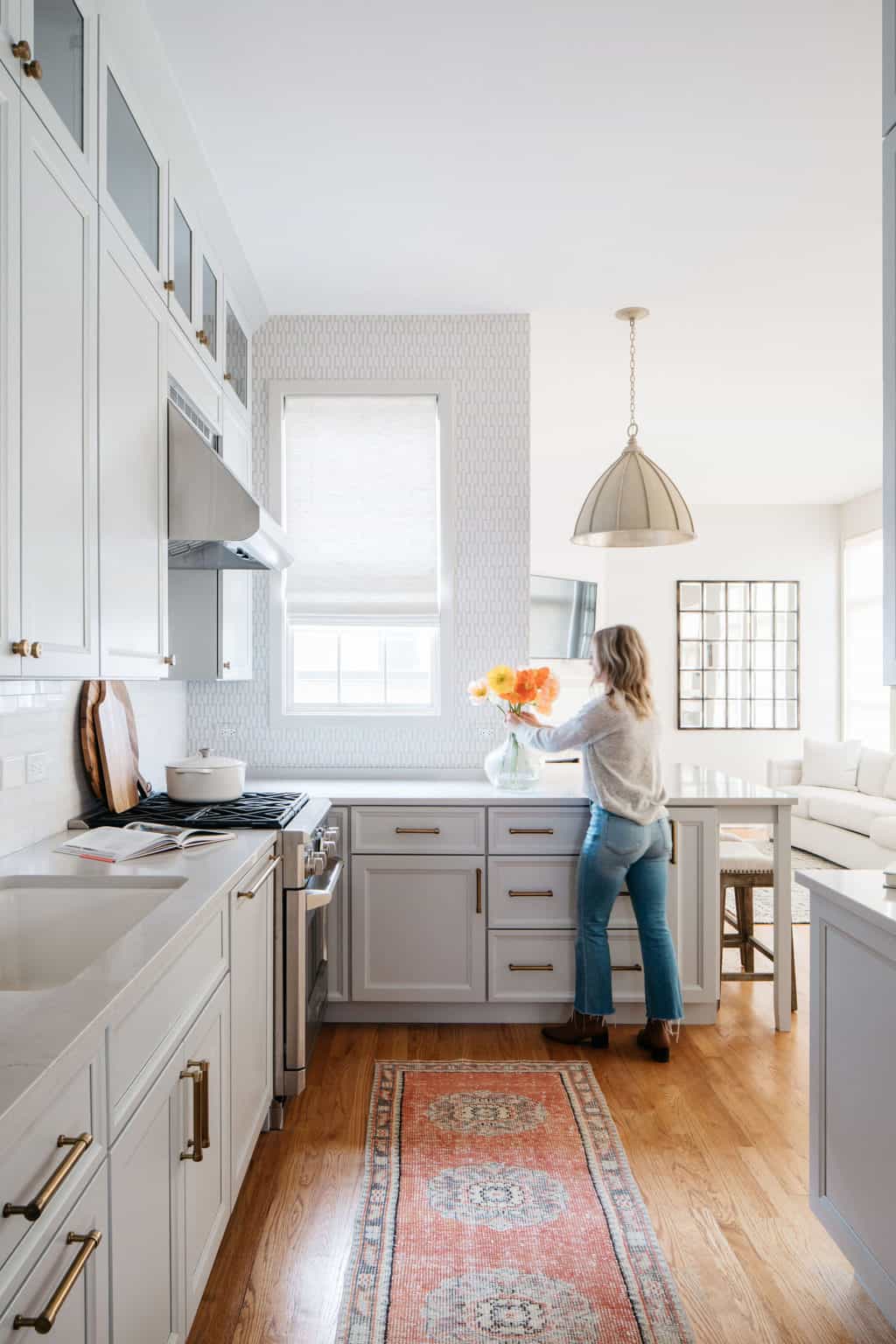
Lincoln Park Kitchen, Centered by Design
If you want even more in-depth tips on how to update your kitchen without a total gut rehab, take a look at our Insider’s Guide to Kitchen Design. This 50-page PDF is packed with advice and all the answers to your questions about kitchen renovations from an interior designer, and will walk you through the kitchen renovation process, step by step. Get a copy here.
Leave a Reply

October 7, 2024
read the post
YOU MIGHT ALSO LIKE
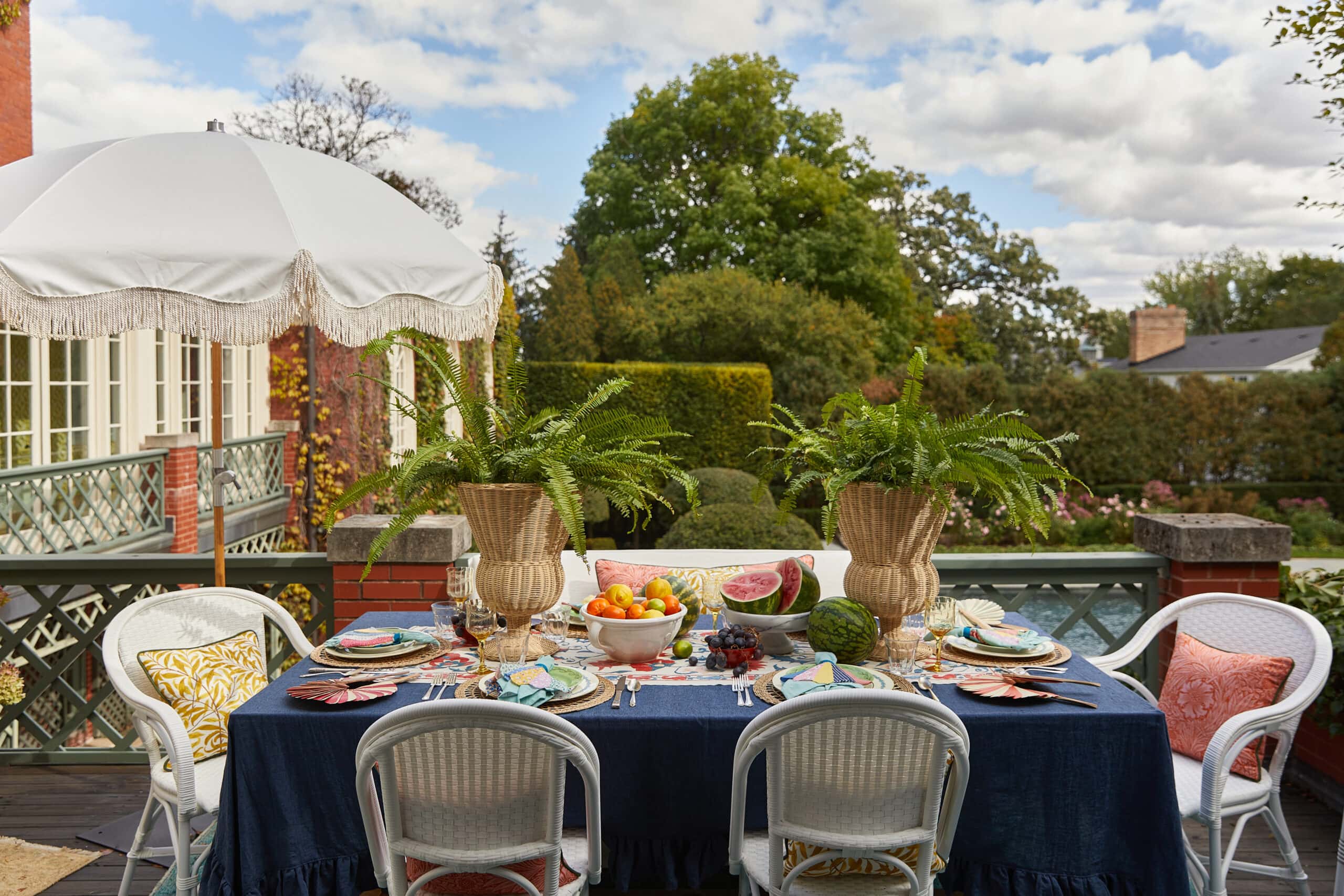
April 17, 2024
read the post
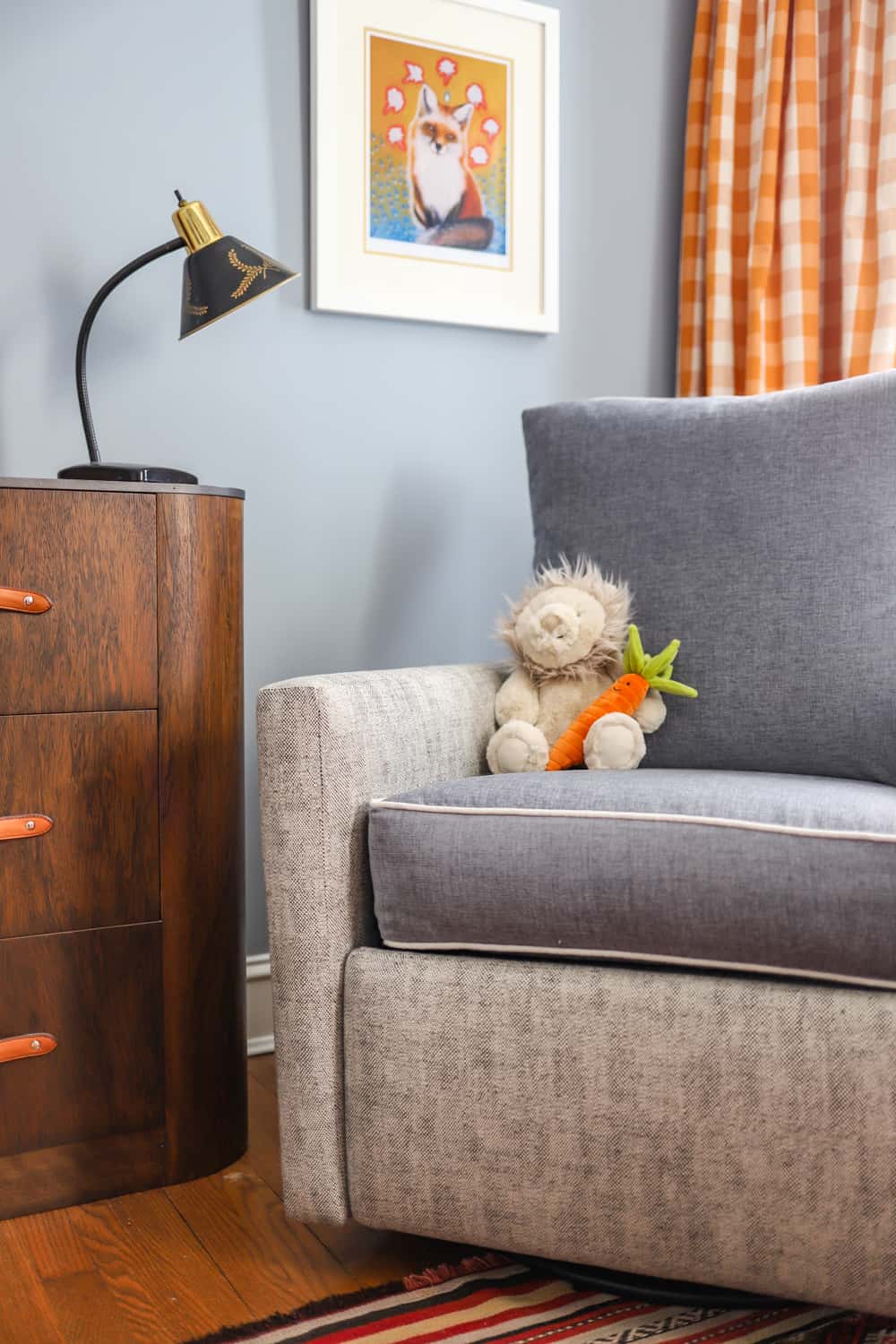
September 2, 2021
read the post
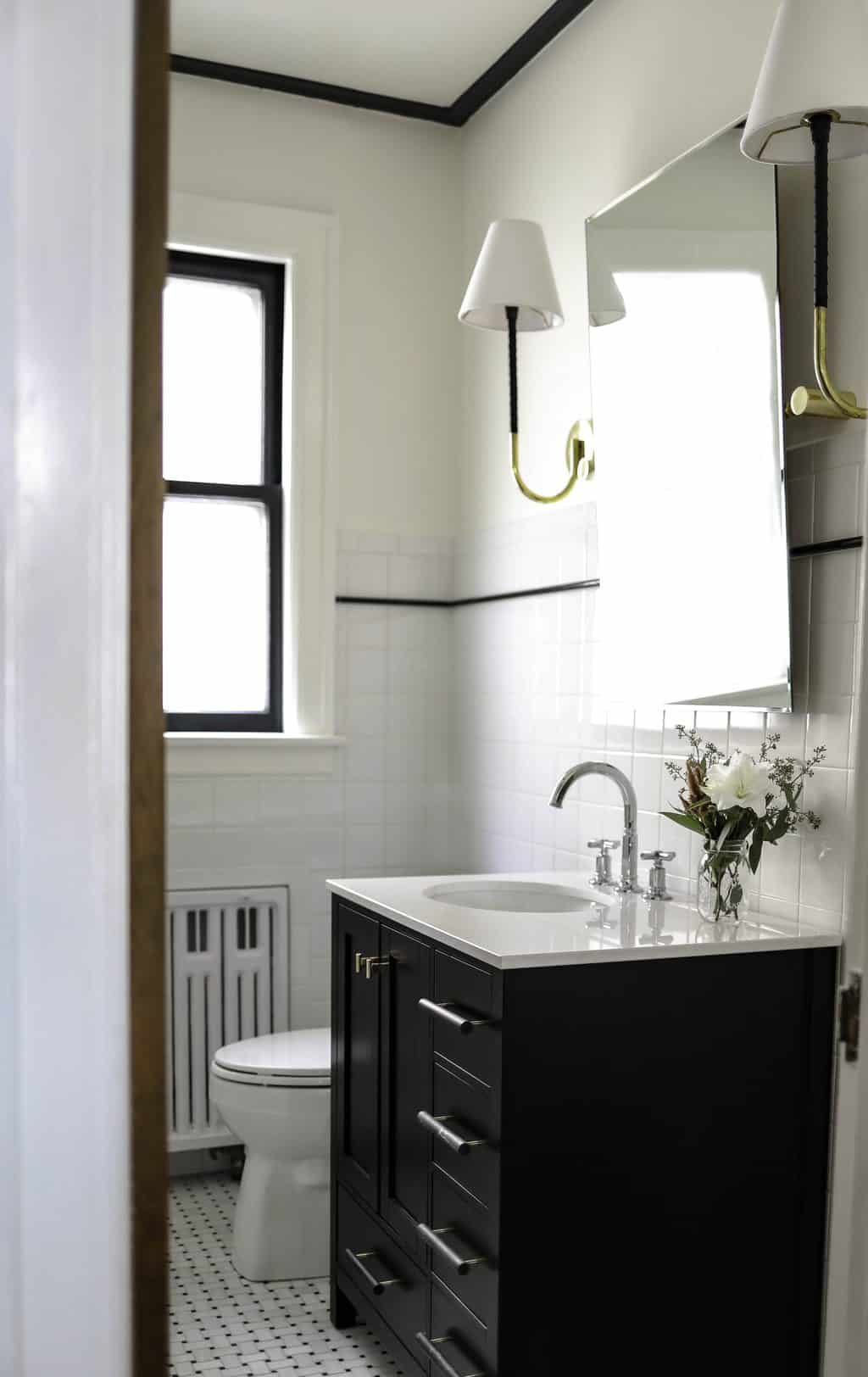
August 24, 2021
read the post
Meet Claire
Claire’s creative energy comes from her unique perspective on the world as both a trained interior designer and a passionate yoga teacher. Her affinity for kitchen design, timeless style and eclectic decorating are shared here, along with lots of interior design education and tips. Thanks for being here, please enjoy!
